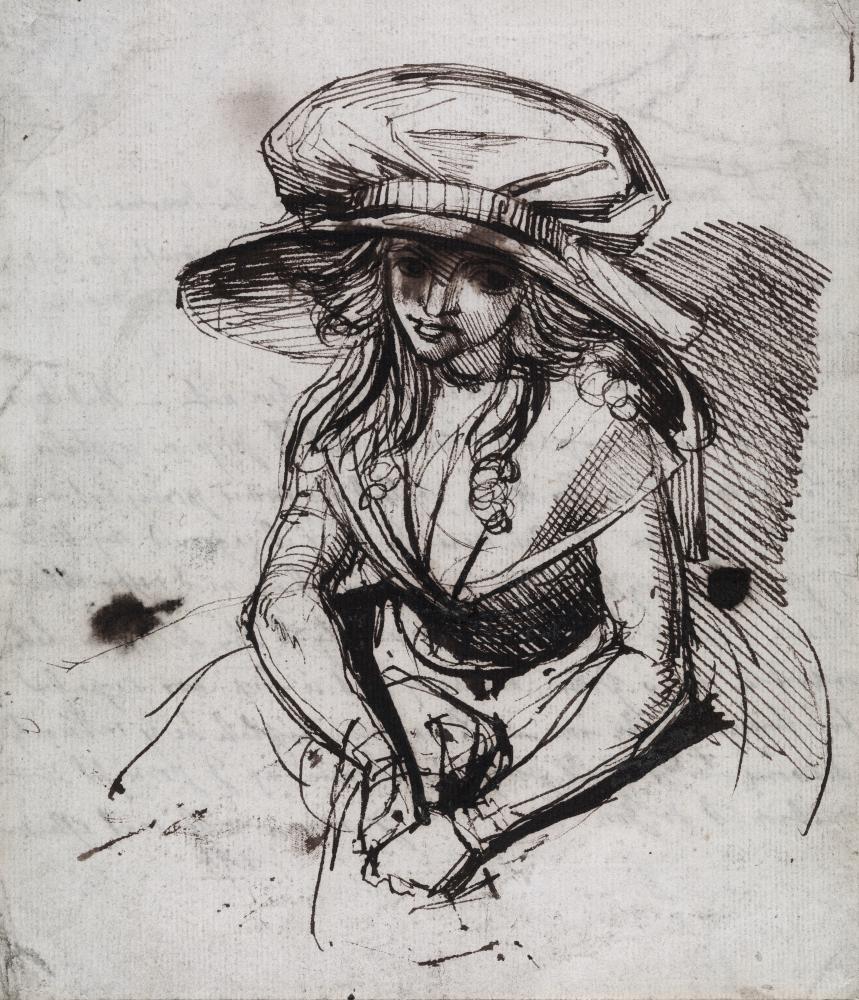From the Master of the Giants Album
(Active in 1779)
Heroic Figures
Provenance
Private Collection, UK
Exhibited
London, Roland, Browse & Delbanco, 1949
The present drawing once formed part of an album that was rediscovered in the 1940s and was the subject of an exhibition held in 1949 at the London galleries of Rowland, Browse and Delbanco. The group contained some forty works and while half were drawn on a similar scale to the present work, the remainder were smaller sheets (15 x 10 inches). Some of the drawings were dated June or July 1779 but none were signed. Rowland, Browse and Delbanco gave the name ‘Master of the Giants’ to the unknown draughtsman. However, to all appearances there seems to have been two contributors to the album. The drawings can be reasonably divided between two distinctive artistic personalities: James Jefferys (c.1751-1784) and Prince Hoare (1755-1834). Distinguishing artistic styles and techniques found in other signed drawings by Jefferys or Hoare are replete in the sheets from ‘The Master of the Giants’ album. The debate concerning the authorship of these sheets has lasted since the discovery of the album in 1949 and has often concluded with either Prince Hoare or James Jefferys as the sole creator. In the 1950s, Leonard Duke and Frederick Antal suggested Prince Hoare (1755-1834) whilst Malcolm Rogers believed it was Fuseli's close friend John Cartwright (fl. 1767-1808). Nancy Pressly in a Burlington Magazine article, 'James Jefferys and the 'Master of the Giants’, published in 1977, put forward the name of James Jefferys as the most likely artist of the album. Jefferys was one of the most interesting and accomplished artists working in Rome in the 1770s. He drew his inspiration from Mannerist painting and classical sculpture but forged his own personal and individual vision of antiquity. His drawings are incredibly rare as he died at the young age of 33 from ‘the most unromantic ailment’ a cold in Soho, London.
Whilst in Rome, both Jefferys and Hoare were part of the orbit that rotated around Henry Fuseli (1741-1825). Fuseli’s distinctive conceptual and technical influence is encountered throughout the ‘Master of the Giants’ album. A story told of James Jefferys which occurred in early 1779 (the same date of the album), and disclosed to Ozias Humphry by Elizabeth Banks (wife of Thomas Banks, the celebrated sculptor), expresses suspicions about the emotional state of Jefferys. Johan Tobias Sergel and Jefferys had, so the story goes, been pursuing the same woman, “The woman I mention'd was carrying a gown to the Mantumaker which Mrs S. (the Perso that decoy'd her from J-ff-s) had bought for her: J-ff-s got sight of her in the street & followed her till she turn'd into the Portone of the house where they had lodg d. when having a brace of pistols in his pocket, he gave her one, & after some altercation, told her she must kill him, or he would her. They both burst into a fit of crying, & so loud as to bring down the People of the House, who were witnesses to a most Curious scene. They then made it up, & he took her a lodging, & has never made his appearance since, nor has he even a shirt to change him, & now it is ten days since & Mr (?) finds himself very happy to have got rid of such a woman, who he expected to have had some trouble with, as must Mr J-ff-s also, when ever he parts with her.”


